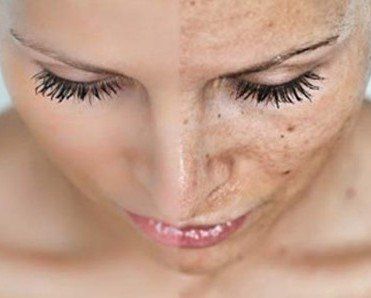Pigment spots. Diagnostics and treatment
Pigment spots may be congenital or acquired. In the course of time, their number grows due to various causes. The dermatologist will diagnose the pigment spots and prescribe the treatment with due account for their type, cause of occurrence, density, intensity, and localisation as well as the age of the patient.
In which areas do pigment spots occur?
Young people are most frequently affected by pigment spots at the area of the forehead, nose, cheeks, and upper lip. Older people especially often can have pigment spots at the areas of the back, chest, and external side of the hands. Increased pigmentation in many cases indicates premature aging of people under 50 years old.
Which causes predetermine increase in pigmentation?
It is melanocytes, i.e. cells producing the main skin pigment melanin, which are responsible for skin pigmentation. Melanin is a sulphur-containing pigment normally found in skin. Increased production of melanin causes hyperpigmentation, while its deficiency results in local or widespread hypopigmentation or depigmentation (vitiligo).
Skin pigmentation is closely related with the vitamin and enzyme balance. The deficiency in vitamins A, C, and PP promotes melanogenesis (the production of melanin), and the deficiency in vitamins of group B inhibits melanogenesis. The activity rate of melanocytes is influenced by the adrenal gland hormones, sex hormones, the activity of the thyroid gland, microelements (copper, zinc, iron), and intercellular enzymes of the skin. Melanoma, i.e. a neoplasm containing melanin, is the most dangerous disruption of the local pigmentation.
Pigment spots may occur as a result of hormonal imbalance, in case of diseases of the thyroid gland and liver as well as during the pregnancy period and in case of gynaecological diseases for women. Quite often, pigment spots occur with people who are suffering from various chronic diseases or nervous system diseases, work with certain chemical substances and higher temperature, suffering from the deficiency in the vitamin C. Pigmentation may increase as a result of the action of various substances that penetrated into the organism. Besides, pigment spots may remain after thermal injuries, injections, insect bites, as a result of certain skin diseases or after the contact with certain plants. In the area of the face, pigment spots may occur in case of the application of various irritating substances such as various creams and soaps; in the area of the trunk – as a result of pressure and friction. The sun has a significant affect on the occurrence of pigment spots.
What are the methods of treating pigment spots?
The treatment of pigment spots can be conducted using the following methods:
Medicament treatment – by applying highly concentrated bleaching preparations on the skin, which may be used during a short period of time and only under the supervision of a doctor.
Skin peels – this method is applied locally with the use of certain acids such as salicylic, glycolic, and trichloracetic. Depending on the structure and localisation of the pigment spot, the peel intensity can be enhanced using certain substance activators.
Mesotherapy – by injecting mixes of various preparations into the skin.
Laser removal of pigment spots – to read more, please follow this link
Prevention of the occurrence of pigment spots – in order to prevent the occurrence of pigment spots, it is necessary not to abuse sunbathing and tanning beds as well as to apply a high (30-50) sun protection factor (SPF).
The article is an intellectual property of Era Esthetic laser dermatology clinic. Textual and other information contained herein may not be copied and/or distributed or used in any way.











